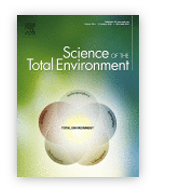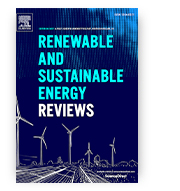Soil development and spatial differentiation in a glacial river valley under cold and extremely arid climate of East Pamir Mountains
Cezary Kabała, Łukasz Chachulski, Bogdan Gądek, Bogdan Korabiewski, Monika Mętrak, Małgorzata Suska-Malawska
Science of the Total Environment
 Melting glaciers release new ground surfaces, which may be either a source of greenhouse gas emissions or a sink for carbon dioxide. Studies carried out in subpolar and alpine ecosystems confirm the relatively rapid soil development and increase of carbon and nitrogen pools. However, observations from high-mountain glacier forelands in cold and dry climate are very scarce. This study analyses the impact of major environmental factors related to climate, topography, and vegetation, over a time-scale, on soil development and spatial soil differentiation in the foreland of Uisu Glacier, East Pamir Mountains. Moreover, the usefulness of the World Reference Base (WRB) and Soil Taxonomy in the classification of poorly developed soils in the ultracontinental climate was assessed. Geomorphological, pedological, and botanical surveys covered a sequence of terraces, alluvial fans, and end-moraines. Typical characteristics of the soils in the glacier foreland were: very high stoniness, coarse texture, high content of calcium carbonate, alkaline reaction, and low salinity. Soil development has extremely low intensity and was manifested in (a) soil organic carbon pools being among the lowest reported in the world (up to 1.4 kg m−2 in the layer 0–50 cm), and (b) the presence of cambic/calcic horizons only on landforms older than of Mid-Holocene age (estimated). It was concluded that both the extremely cold and extremely dry climate conditions in the Uisu Glacier foreland limit the water flux and availability, suppress vegetation density and variability, and slow down the rate of soil development. Both WRB and Soil Taxonomy were able to reflect the advances in soil development and spatial soil differentiation (Calcaric Hyperskeletic Leptosols – Calcaric Cambisols – Cambic Calcisols, and Gelifluvents – Haplocambids - Haplocalcids, respectively); however, highlighting different features developed under an extremely cold and dry climate conditions of the East Pamir Mountains.
Melting glaciers release new ground surfaces, which may be either a source of greenhouse gas emissions or a sink for carbon dioxide. Studies carried out in subpolar and alpine ecosystems confirm the relatively rapid soil development and increase of carbon and nitrogen pools. However, observations from high-mountain glacier forelands in cold and dry climate are very scarce. This study analyses the impact of major environmental factors related to climate, topography, and vegetation, over a time-scale, on soil development and spatial soil differentiation in the foreland of Uisu Glacier, East Pamir Mountains. Moreover, the usefulness of the World Reference Base (WRB) and Soil Taxonomy in the classification of poorly developed soils in the ultracontinental climate was assessed. Geomorphological, pedological, and botanical surveys covered a sequence of terraces, alluvial fans, and end-moraines. Typical characteristics of the soils in the glacier foreland were: very high stoniness, coarse texture, high content of calcium carbonate, alkaline reaction, and low salinity. Soil development has extremely low intensity and was manifested in (a) soil organic carbon pools being among the lowest reported in the world (up to 1.4 kg m−2 in the layer 0–50 cm), and (b) the presence of cambic/calcic horizons only on landforms older than of Mid-Holocene age (estimated). It was concluded that both the extremely cold and extremely dry climate conditions in the Uisu Glacier foreland limit the water flux and availability, suppress vegetation density and variability, and slow down the rate of soil development. Both WRB and Soil Taxonomy were able to reflect the advances in soil development and spatial soil differentiation (Calcaric Hyperskeletic Leptosols – Calcaric Cambisols – Cambic Calcisols, and Gelifluvents – Haplocambids - Haplocalcids, respectively); however, highlighting different features developed under an extremely cold and dry climate conditions of the East Pamir Mountains.
10.1016/j.scitotenv.2020.144308
Scenarios as a tool supporting decisions in urban energy policy: The analysis using fuzzy logic, multi-criteria analysis and GIS tools
M. Mrówczyńska, M. Skiba, M. Sztubecka, A. Bazan-Krzywoszańska, Jan Kazak, P. Gajownik
Renewable & Sustainable Energy Reviews
 At present, cities characterised by high building intensity, which requires a sufficiently large amount of energy for proper functioning. This necessity means that energy planning should focus on the one hand on saving and reducing energy consumption, but also on introducing renewable energy sources (RES) in a way that ensures sustainable urban development. Social and economic issues that condition equality in access to energy and allow its rational use are a severe problem in cities. The article proposes a way of identifying the criteria that have the most significant impact on energy policy effects and the use of renewable energy in cities. The tests results affecting the energy potential of cities were analysed using various energy scenarios. The fuzzy logic and the Geographic Information System (GIS) were used to assess them. To show the differences between the scenarios, the Energy Potential Index (EPI) was developed to determine the feasibility of implementing individual energy scenarios in six urban districts. The results of this study present the importance of different criteria that influence the decisions made and the applied energy policy scenarios in the city areas. The approach that is important regardless of the goals is the intensity of development. The most desirable area for the implementation of the energy policy, taking into account renewable energy sources, is the city quarter with high-intensity multi-family housing. The study conclusions provide guidelines for decision-makers shaping the energy policy in the city in the form of the EPI indicator - a comparative assessment of the location and development of renewable energy systems to increase energy potential, equality in access to energy and mitigation of the effects of climate change.
At present, cities characterised by high building intensity, which requires a sufficiently large amount of energy for proper functioning. This necessity means that energy planning should focus on the one hand on saving and reducing energy consumption, but also on introducing renewable energy sources (RES) in a way that ensures sustainable urban development. Social and economic issues that condition equality in access to energy and allow its rational use are a severe problem in cities. The article proposes a way of identifying the criteria that have the most significant impact on energy policy effects and the use of renewable energy in cities. The tests results affecting the energy potential of cities were analysed using various energy scenarios. The fuzzy logic and the Geographic Information System (GIS) were used to assess them. To show the differences between the scenarios, the Energy Potential Index (EPI) was developed to determine the feasibility of implementing individual energy scenarios in six urban districts. The results of this study present the importance of different criteria that influence the decisions made and the applied energy policy scenarios in the city areas. The approach that is important regardless of the goals is the intensity of development. The most desirable area for the implementation of the energy policy, taking into account renewable energy sources, is the city quarter with high-intensity multi-family housing. The study conclusions provide guidelines for decision-makers shaping the energy policy in the city in the form of the EPI indicator - a comparative assessment of the location and development of renewable energy systems to increase energy potential, equality in access to energy and mitigation of the effects of climate change.
10.1016/j.rser.2020.110598









